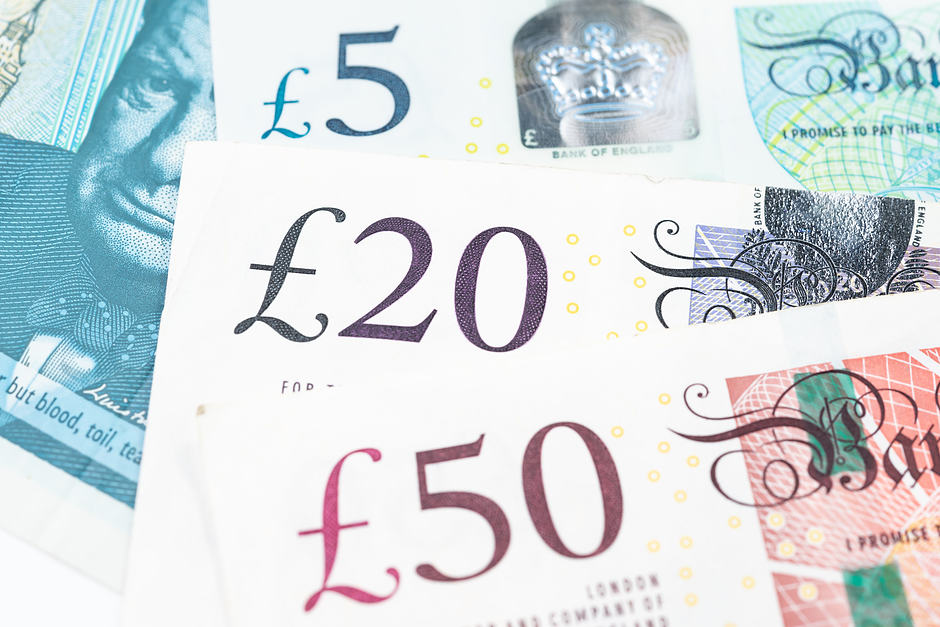Pound Sterling rises amid uncertainty over BoE rate-cut timing
- The Pound Sterling struggles to extend gains against the US Dollar as investors shift focus to the US core PCE Inflation.
- Investors expect that the BoE will start reducing key rates in August.
- Investors will focus on the US core PCE inflation data for May this week.

The Pound Sterling (GBP) performs relatively stronger against its peers in Tuesday’s New York session. The British currency remains upbeat amid uncertainty about when the Bank of England (BoE) will start cutting interest rates.
Market expectations indicate that the BoE will announce a cut in interest rates in August, the first one since the Covid-19 pandemic hit. Speculation for BoE rate cuts in August has strengthened as policymakers signaled in the latest policy meeting that they are closer to starting to roll back their restrictive interest rate stance.
BoE Governor Andrew Bailey said in the monetary policy statement that the decision to keep interest rates unchanged at 5.25% in the last meeting was “finely balanced”. Seven officials voted to keep key rates steady while policymakers Swati Dhingra and Deputy Governor Dave Ramsden voted for a rate cut.
The BoE said the return of the annual headline inflation to the bank’s target of 2% is welcome news. However, it is still not enough for rate cuts. BoE policymakers remain worried about stubborn wage inflation, which is posing upside risks to price pressures in the service sector.
Daily digest market movers: Pound Sterling remains firm against majority of its peers
- The upside in the Pound Sterling against the US Dollar (USD) appears to have stalled around the round-level resistance of 1.2700. Earlier, the GBP/USD pair recovered from a five-week low of 1.2620 as the US Dollar (USD) corrected due to firm speculation that the Federal Reserve (Fed) will start cutting interest rates from the September meeting. The US Dollar Index (DXY), which tracks the Greenback’s value against six major currencies, drops to 105.40 from a seven-week high of 105.90.
- According to the CME FedWatch tool, 30-day Federal Funds Futures pricing data indicates that there will be two rate cuts and the central bank will lower borrowing rates subsequently in the November or December meeting.
- Contrary to market expectations, Fed officials expect only one rate-cut this year as they say they want to see inflation declining for months before pivoting to policy normalization. In an interview with CNBC on Monday, Chicago Fed Bank President Austan Goolsbee said that he is “very optimistic” about a further improvement in the inflation data, which will open room for potential rate cuts.
- Going forward, investors will focus on the core US core Personal Consumption Expenditure price index (PCE) for May, which will be published on Friday. The core PCE price index data is the Fed’s preferred inflation measure, and it is expected to provide fresh cues on when the central bank will start reducing interest rates this year. Soft figures would boost expectations of the Fed to begin easing borrowing rates from September, while hot numbers will likely delay any rate cuts towards the end of the year.
Pound Sterling Price Today:
British Pound PRICE Today
The table below shows the percentage change of British Pound (GBP) against listed major currencies today. British Pound was the strongest against the Euro.
| USD | EUR | GBP | JPY | CAD | AUD | NZD | CHF | |
|---|---|---|---|---|---|---|---|---|
| USD | 0.34% | -0.01% | 0.02% | 0.03% | 0.26% | 0.14% | 0.16% | |
| EUR | -0.34% | -0.36% | -0.32% | -0.29% | -0.10% | -0.16% | -0.20% | |
| GBP | 0.00% | 0.36% | 0.02% | 0.04% | 0.27% | 0.20% | 0.18% | |
| JPY | -0.02% | 0.32% | -0.02% | 0.00% | 0.25% | 0.15% | 0.15% | |
| CAD | -0.03% | 0.29% | -0.04% | -0.01% | 0.22% | 0.16% | 0.14% | |
| AUD | -0.26% | 0.10% | -0.27% | -0.25% | -0.22% | -0.06% | -0.08% | |
| NZD | -0.14% | 0.16% | -0.20% | -0.15% | -0.16% | 0.06% | -0.02% | |
| CHF | -0.16% | 0.20% | -0.18% | -0.15% | -0.14% | 0.08% | 0.02% |
The heat map shows percentage changes of major currencies against each other. The base currency is picked from the left column, while the quote currency is picked from the top row. For example, if you pick the British Pound from the left column and move along the horizontal line to the US Dollar, the percentage change displayed in the box will represent GBP (base)/USD (quote).
Technical Analysis: Pound Sterling rebounds above 61.8% Fibo retracement
The Pound Sterling advances to around 1.2700 against the US Dollar after recovering from the crucial support of 1.2620. The GBP/USD pair gathers strength to sustain above the 20-day and 50-day Exponential Moving Averages (EMAs), which trade around 1.2700 and 1.2670, respectively.
The Cable also trades above the 61.8% Fibonacci retracement support at 1.2667, plotted from the March 8 high of 1.2900 to the April 22 low at 1.2300.
The 14-day Relative Strength Index (RSI) oscillates inside the 40.00-60.00 range, indicating a consolidation trend ahead.
BoE FAQs
The Bank of England (BoE) decides monetary policy for the United Kingdom. Its primary goal is to achieve ‘price stability’, or a steady inflation rate of 2%. Its tool for achieving this is via the adjustment of base lending rates. The BoE sets the rate at which it lends to commercial banks and banks lend to each other, determining the level of interest rates in the economy overall. This also impacts the value of the Pound Sterling (GBP).
When inflation is above the Bank of England’s target it responds by raising interest rates, making it more expensive for people and businesses to access credit. This is positive for the Pound Sterling because higher interest rates make the UK a more attractive place for global investors to park their money. When inflation falls below target, it is a sign economic growth is slowing, and the BoE will consider lowering interest rates to cheapen credit in the hope businesses will borrow to invest in growth-generating projects – a negative for the Pound Sterling.
In extreme situations, the Bank of England can enact a policy called Quantitative Easing (QE). QE is the process by which the BoE substantially increases the flow of credit in a stuck financial system. QE is a last resort policy when lowering interest rates will not achieve the necessary result. The process of QE involves the BoE printing money to buy assets – usually government or AAA-rated corporate bonds – from banks and other financial institutions. QE usually results in a weaker Pound Sterling.
Quantitative tightening (QT) is the reverse of QE, enacted when the economy is strengthening and inflation starts rising. Whilst in QE the Bank of England (BoE) purchases government and corporate bonds from financial institutions to encourage them to lend; in QT, the BoE stops buying more bonds, and stops reinvesting the principal maturing on the bonds it already holds. It is usually positive for the Pound Sterling.
Author

Sagar Dua
FXStreet
Sagar Dua is associated with the financial markets from his college days. Along with pursuing post-graduation in Commerce in 2014, he started his markets training with chart analysis.

















